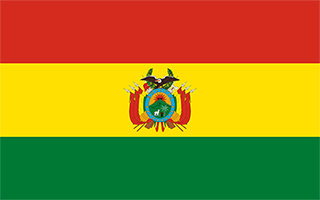Facts and Data
Webpages:
Official Unesco Page
Basis Data:
Unesco World heritage since: 1987
Size of heritage:
Coordinates:
Longitude: -64,247°
Latitude: -18,416°
Summary
In the 16th century, this area was regarded as the world’s largest industrial complex. The extraction of silver ore relied on a series of hydraulic mills. The site consists of the industrial monuments of the Cerro Rico, where water is provided by an intricate system of aqueducts and artificial lakes; the colonial town with the Casa de la Moneda; the Church of San Lorenzo; several patrician houses; and the barrios mitayos, the areas where the workers lived.
Location on Map
Show bigger map on Openstreetmap
City of Potosí: A Historic UNESCO World Heritage Site in Bolivia
The City of Potosí, located in the Province of Potosí in Bolivia, is a UNESCO World Heritage site that holds immense historical and cultural significance. Known as the "Silver City," Potosí was once one of the wealthiest and most populous cities in the world during the 16th and 17th centuries.
History
Potosí's history dates back to the pre-Columbian era when it was a mining center for the indigenous people. However, it was the discovery of the Cerro Rico (Rich Hill) silver deposit in 1545 that transformed Potosí into a thriving colonial city. The Spanish conquistadors exploited the vast silver reserves, leading to an unprecedented influx of wealth and population.
During its peak, Potosí became one of the largest cities in the Americas, attracting people from all over the world. The city's prosperity was reflected in its magnificent architecture, including grand churches, palaces, and mansions. The Casa de la Moneda (Mint House) was established in Potosí, producing the famous Spanish colonial coins known as "pieces of eight."
However, the silver boom had severe consequences. The harsh working conditions in the mines led to the exploitation and suffering of indigenous and African slave laborers. The city's wealth also attracted the attention of pirates and bandits, resulting in frequent attacks and looting.
Current State
Today, the City of Potosí stands as a testament to its rich history and cultural heritage. The UNESCO World Heritage designation in 1987 recognized the city's outstanding universal value and the need for its preservation.
The historic center of Potosí is characterized by its colonial architecture, which showcases a blend of Spanish and indigenous influences. The city's main square, Plaza 10 de Noviembre, is surrounded by impressive buildings such as the Cathedral Basilica of Our Lady of Peace and the National Mint Museum.
The Cerro Rico, the iconic mountain that once fueled Potosí's wealth, continues to be an active mining site. Visitors can explore the mines and gain insight into the challenging conditions faced by miners. However, it is important to note that these visits should be undertaken with caution and respect for the workers' safety and dignity.
Potosí's cultural heritage is also celebrated through various festivals and traditions. The Oruro Carnival, recognized as a Masterpiece of the Oral and Intangible Heritage of Humanity by UNESCO, showcases vibrant dances, music, and costumes that reflect the city's multicultural heritage.
Efforts are being made to preserve and restore Potosí's historic buildings and promote sustainable tourism. The local government, in collaboration with international organizations, is working towards the conservation of the city's architectural heritage and the improvement of infrastructure and services for visitors.
The City of Potosí stands as a living testament to the impact of colonialism, the exploitation of natural resources, and the resilience of its people. Its UNESCO World Heritage status ensures that its historical and cultural significance will be safeguarded for future generations to appreciate and learn from.
